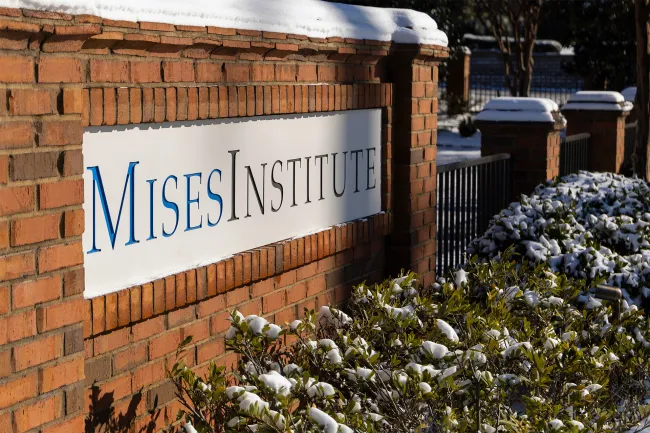Prospective homebuyers around the country are cheering the Federal Reserve’s rate cut. But unfortunately, the Fed may have just made buying a house even more difficult. Many consumers, banks, commentators, and the president himself have been calling on the Federal Reserve to lower the federal funds rate—a special inter-bank rate which often (though not always) indirectly affects mortgage rates. Last week, they finally did it, lowering the federal funds rate by 25 basis points, with hints that they’ll lower it even further later this year.
Though it might sound great for prospective buyers, lowering rates will actually make housing less affordable, not more. It sounds counterintuitive, but it’s really just basic economics: lower mortgage rates will incentivize more buyers to enter the market, which will then drive up prices. By boosting demand without increasing the supply, lower rates will end up making housing more expensive.
It won’t happen immediately. Many lucky homebuyers will jump into the market before prices catch up with the higher demand. But, as more prospective buyers start bidding on the limited number of available units, sellers will notice, and they’ll bump up their prices in response.
There is a clear inverse correlation between mortgage rates and home prices. We saw this on a dramatic scale during the covid pandemic, when the Fed cut the federal funds rate to 0 percent. Mortgage rates plummeted and home prices skyrocketed, going up 38 percent between the second quarter of 2020 and the second quarter of 2022.
This month’s rate cut is marginal—only 0.25 percent—but more cuts are expected later this year and again in 2026. Undoubtedly, these moves will entice more buyers into the market, driving home prices up.
That’s unfortunate because, over the past year, housing affordability has been steadily improving. Contrary to popular opinion, rising interest rates did not make buying a house unaffordable. Instead, higher rates kept demand in check, forcing sellers to temper their price hikes. Since 2023, prices have been generally flat quarter to quarter, and have even declined slightly this year. Indeed, the median list price is 3.75 percent lower today than it was at the beginning of 2024.
One reason prices leveled off recently is a dramatic increase in inventory. The number of houses on the market today is now three times what was in February 2022. In 2025 alone, the number of available homes is up 32 percent. At 1.1 million units, national housing inventory is quickly returning to a level that was considered normal during the late 20-teens.
At the same time, wages have been going up, making the average mortgage payment more affordable. Real median wages are now 3 percent higher than they were two years ago. Even with average mortgage rates in the 6-7 percent range, if home prices remained stagnant—or rose only at a moderate pace—the typical American’s buying power would slowly grow over time.
To be sure, these improvements are mild at best. If prices continued to stagnate and wages continued to rise, it would still take several years before prospective buyers feel more confident in their ability to qualify for a mortgage. But at least for now, things are trending in the right direction.
Unfortunately, the Fed’s decision threatens to reverse this positive trend. The state of housing affordability is still precarious, with several factors keeping ownership out of reach for a huge swath of Americans. At the national level, the president’s tariffs are driving up the cost of building supplies. Meanwhile, onerous state and local regulations make it even more difficult and expensive to construct new houses. These government roadblocks are making it unnecessarily difficult to build new housing at affordable prices. New house builds have been fairly flat over the past decade, despite the fact that the US population has increased by 20 million inhabitants.
While lowering interest rates may seem like an easy and politically expedient solution, it will ultimately exacerbate the problem. If policymakers are serious about making homeownership more affordable, they should focus their efforts on removing tariffs and regulatory roadblocks that prevent the market from meeting the nation’s housing supply needs.


